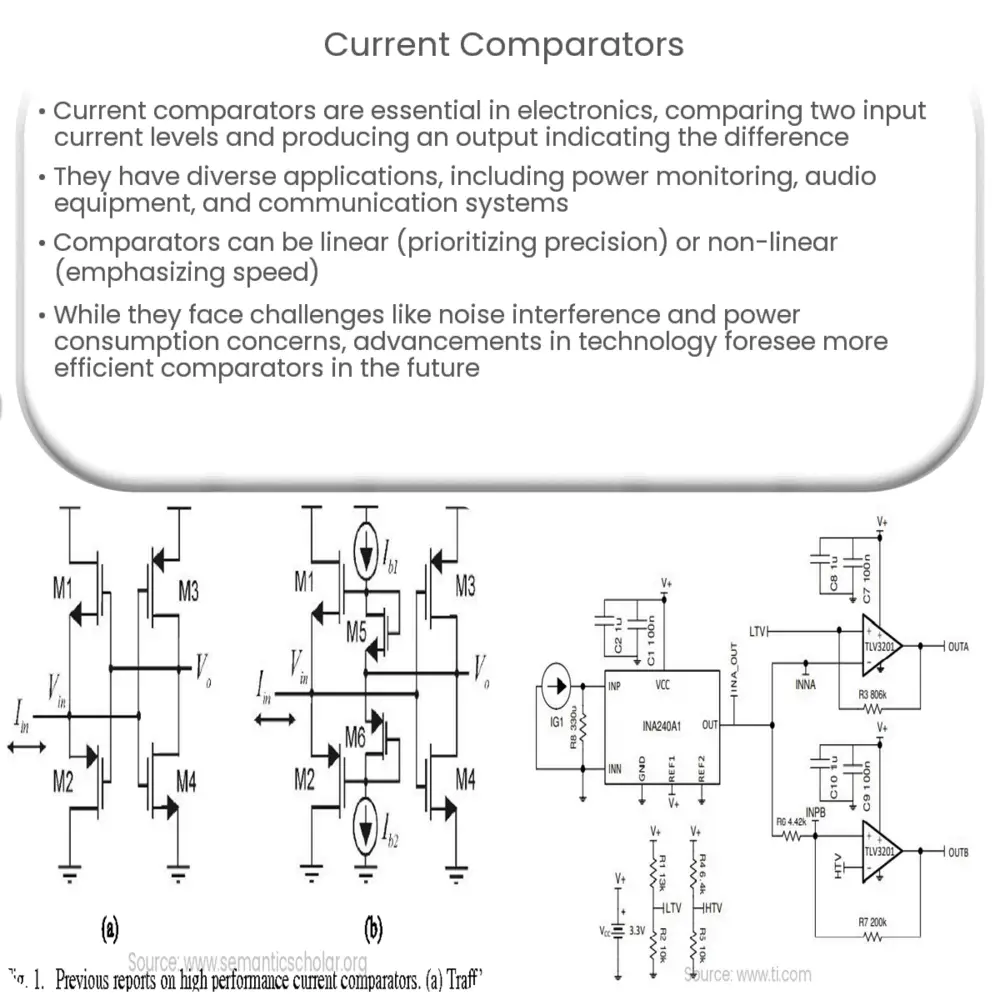Explore the role of current comparators in electronics, their working principles, applications, types, challenges, and future prospects.

Understanding Current Comparators
Current comparators are integral components in electrical engineering and electronics, playing a crucial role in many modern technologies. These devices compare two current levels and produce an output signal that indicates the difference between the two input signals. Their precision and reliability are paramount to the functioning of complex electronic systems.
Principles of Current Comparators
At its core, a current comparator works on a simple principle. It takes two input currents, often referred to as I1 and I2. The comparator then determines which of these currents is greater. If I1 is greater than I2, the comparator outputs a certain signal, usually a ‘1’ or HIGH. Conversely, if I2 is greater than I1, the output will be different, usually a ‘0’ or LOW.
Applications of Current Comparators
Current comparators are used in a wide array of applications. A few of these applications include:
- Power Monitoring Systems: Current comparators are used in power monitoring systems to maintain the balance between demand and supply.
- Audio Equipment: They’re employed in audio equipment to manage sound levels and equalization, ensuring the quality of audio output.
- Communication Systems: They play a crucial role in communication systems for encoding and decoding signals.
Types of Current Comparators
Current comparators can be broadly categorized into two types:
- Linear Current Comparators: These are used when precision is paramount, as they’re known for their accuracy and ability to compare small current differences.
- Non-linear Current Comparators: These are typically used in applications where speed is a priority over precision.
Both types have their strengths and are chosen according to the specific requirements of the electronic system they’re to be integrated into.
Components and Characteristics of Current Comparators
Current comparators are made up of several components, including operational amplifiers, resistors, and diodes. The operational amplifier is the key component that performs the actual comparison of the currents. Other elements, such as resistors and diodes, support the functioning of the comparator by adjusting the current levels or providing voltage regulation.
One of the primary characteristics of current comparators is their response time, which is the time it takes for the comparator to react to a change in input current. Another important characteristic is their input offset current, which is the difference in the input currents when the output is at a neutral state. These two characteristics significantly influence the performance and efficiency of the comparator.
Challenges and Considerations
While current comparators are robust and reliable components, they are not without their challenges. One of the most common issues is noise, which can cause a comparator to produce false output signals. Therefore, noise reduction and filtering are critical in designing circuits that include current comparators.
Power consumption is another important consideration. Although comparators themselves do not consume a lot of power, they are often part of power-sensitive applications. Consequently, low power comparators are preferred in battery-operated devices or energy-efficient systems.
Future of Current Comparators
The future of current comparators is tied to advancements in electronics and semiconductor technologies. With the increasing demand for faster, smaller, and more energy-efficient devices, current comparators will continue to evolve. For example, advances in nanotechnology may lead to the development of comparators that are even smaller and more efficient than those available today.
Conclusion
In conclusion, current comparators are crucial components in many modern electronic systems. Despite their small size, they play a massive role in ensuring that our devices and systems function as intended. As technology continues to advance, the importance of these components will only increase. Understanding the working principles, applications, and challenges of current comparators is therefore vital for anyone involved in electronics or electrical engineering.

